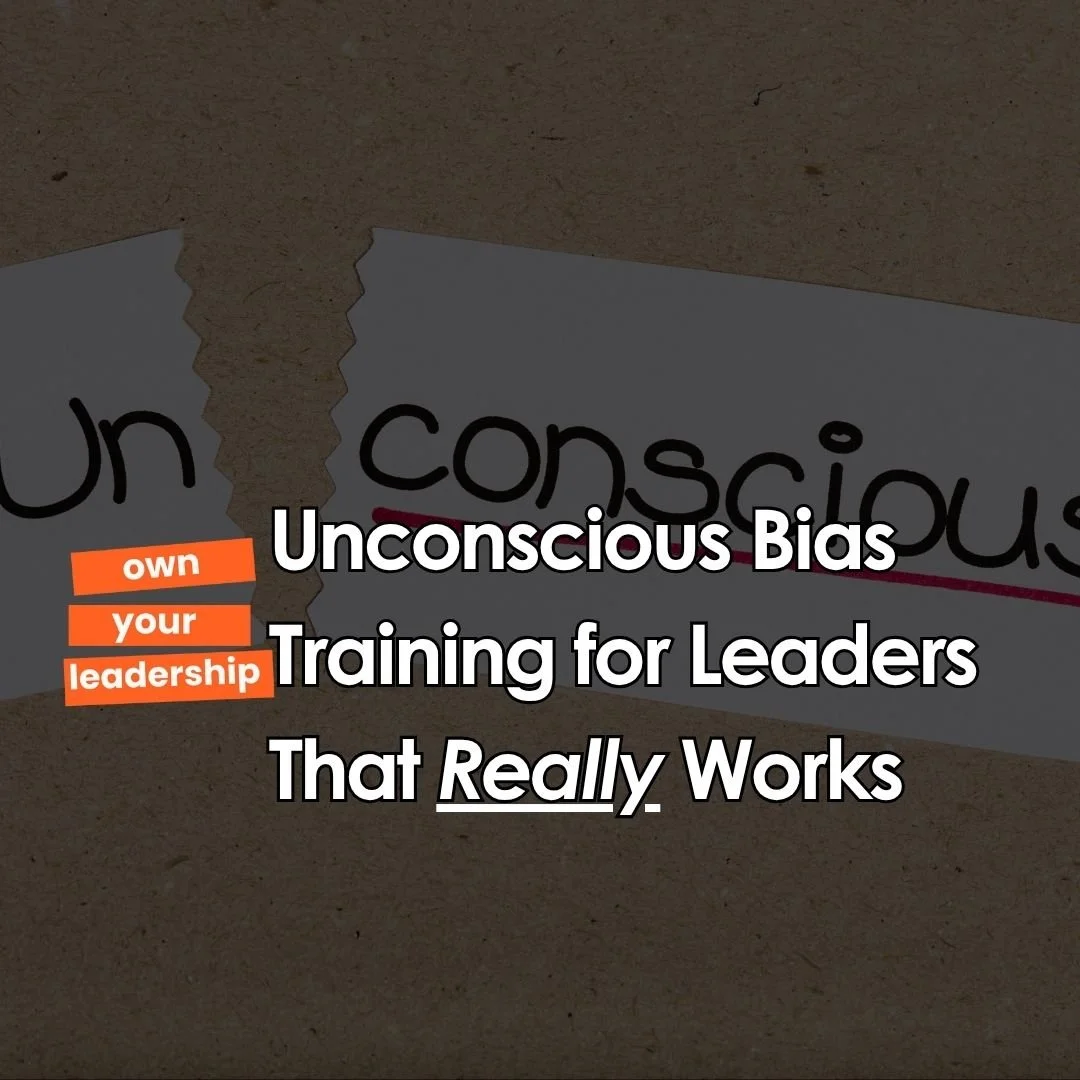Unconscious Bias Training for Leaders That Really Works
Imagine this….
A capable, experienced team member repeatedly gets passed over for high-profile projects. Not because of their performance, which is solid, but because their quieter, more considered style doesn’t quite “fit” the fast-paced team vibe.
Meanwhile, a colleague who mirrors the leader’s communication style and energy gets informal coaching, bigger responsibilities, and eventually a promotion.
No one intended to exclude. But the impact? One person felt overlooked and undervalued. Another gained unearned advantages. And team trust quietly eroded.
This is the real-world effect of unconscious bias in leadership – and it’s why effective unconscious bias training is essential in today’s workplaces. If you’re not sure what unconscious bias is, then click to read ACAS’ definition of Unconscious Bias.
Why Unconscious Bias Training Often Falls Short
Unconscious bias is not a sign of poor character; it’s a feature of being human. (Shock, horror, surprise! We all have unconscious bias! All hands up in the back, please!)
Our brains are wired to take mental shortcuts, especially under pressure. But when those shortcuts go unchecked in leadership, they can reinforce inequality, dent morale, and limit potential.
And while unconscious bias training is often rolled out with good intentions, the truth is: not all training works.
In fact, as the recent Harvard Business Review article on Unconscious Bias Training That Works highlights, many organisations invest in awareness training that doesn’t lead to real change, because it lacks context, accountability, and leadership relevance.
That’s where a new approach is needed.
The Real Impact of Unconscious Bias in Leadership
Bias shapes everything from who speaks in meetings to who gets promoted. And for leaders, unchecked bias can:
· Create blind spots in decision-making
· Favour “mini-me” hires over diverse talent
· Lead to unfair feedback loops
· Silence different thinking
· Undermine psychological safety
And the result?
We end up with teams where some people feel excluded or unseen, and others experience unearned favouritism.
It’s not always intentional – but it’s always harmful.
As a leader, you set the tone. And that means you have huge influence in creating equity, or the flip of unintentionally maintaining inequality. Yes, read that again.
What Effective Unconscious Bias Training Looks Like
To shift from awareness to action, unconscious bias training must be practical, contextual, and relevant to leadership realities. Research shows that training rooted in real scenarios, reflection, and clear behavioural commitments is what drives meaningful change.
That’s exactly what I offer.
Unconscious Bias Training for Leaders: My Approach
Every leader has biases, but not every leader knows how they affect their day-to-day decisions.
My workshops are designed to help leaders reflect without judgement, recognise their impact, and build inclusive habits that improve team trust, engagement, and performance.
Here’s what my unconscious bias training for leaders includes:
✔️ Understanding unconscious bias – what it is, where it comes from, and how it shows up in real-life leadership
✔️ Common leadership bias traps – like favouritism, likability bias, and assumptions around confidence vs. competence
✔️ How bias impacts hiring, team dynamics, feedback, and development
✔️ Practical strategies – to reduce bias in everyday choices like delegation, listening, and performance reviews
✔️ Building inclusive habits – language, curiosity, and leadership presence that helps people feel seen and valued. Check out my blog on ‘leadershipping’ to learn how to have that leadership presence.
✔️ Cultivating diverse thinking – creating psychological safety and encouraging challenge
✔️ Case studies and scenarios – to bring the learning to life in your specific organisational context
✔️ Team and personal commitments – because inclusion isn’t a one-off event – it’s a practice
This training doesn’t rely on generic slides or finger-pointing. It’s human, grounded, and designed for people who genuinely want to lead better.
Why Contextualised Unconscious Bias Training Works Better
One of the key findings from the HBR research is that contextualised unconscious bias training outperforms generic content. People are far more likely to engage, reflect, and change behaviour when they can see the relevance to their own environment.
That’s why my workshops are always tailored to your organisation, not just delivered to it.
Before running any session, I work with you to understand:
- Your leadership culture and challenges
- The pressures your managers are under
- The make-up of your teams
- Where you want to move the dial on inclusion and equity
This makes the training relevant, relatable, and results-focused, not just a tick-box exercise.
What Leaders Say After the Training
“I’ve done bias training before – but this felt different. I actually saw myself in the examples.”
”It helped me notice how I speak to my team and who I tend to rely on most.”
”I can now see how some team members might not feel seen or heard.”
”I left with practical ways to improve – and I didn’t feel judged.”
When leaders shift, teams benefit.
And that’s the real goal. You may wish to read my blog on leaders prioritising mental health and consider how mitigating our unconscious bias could impact our mental health.
Final Thoughts: Unconscious Bias Training Is a Leadership Responsibility
Our unconscious bias won’t go away.
But it can be recognised, challenged, and managed – especially by leaders willing to do the work.
The real cost of bias is not just missed opportunities - it’s real people feeling unseen, unheard, or unfairly treated.
The real opportunity here is to develop inclusive leadership that builds trust, strengthens culture, and helps everyone do their best work.
Book Unconscious Bias Training That Makes a Difference
Whether you’re starting your inclusion journey or ready to go deeper, I’d love to support you and your leadership team.
Please download my programme of leadership training first, and then let’s talk about bringing meaningful, contextualised unconscious bias training into your organisation - training that actually leads to change.


